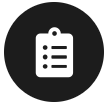Scale Your Ad Budgets Efficiently
If you’re running a direct-to-consumer (DTC) brand, there’s no getting around it. Love it or hate it, Facebook needs to be part of your marketing-tactic arsenal. When done right, however, Facebook is one of the most cost-efficient ways to acquire new customers and tell your story to potential customers. It’s also not going anywhere. It’s only getting stronger and will continue to get more expensive as more advertisers join on. The biggest mistake you can make? Jumping in without a real strategy in place. Keep reading and we’ll share some of the keys we’ve learned, through our own internal efforts as well as what we’ve done for clients.
How Facebook Fits In
There are a few reasons why Facebook is a must-do for DTC brands, and it all comes down to the platform’s capabilities:
- In-Feed Ad Unit: Unlike other digital ad units (like banners) the in-feed Facebook and Instagram ad unit allows you to reach users without being intrusive, in a way that feels native and in a place where their attention is concentrated.
- Reach & Targeting: Almost everyone in the US can be reached on Facebook or Instagram. The extremely large user base also means that Facebook has extensive data on user behavior, specifically when it comes to how users respond to ads.
- Real-Time Bidding & Precision Tracking: Buying ads in a real-time auction, with immediate feedback and precision tracking, allows you to effectively optimize your investment. Facebook truly delivers on the promise of programmatic advertising, an appealing model because it allows more control (adjust budgets at any time) and more immediate feedback (track who purchases after seeing an ad) than traditional advertising.
3 Things You Need to Succeed

Structure

Testing

Creative
Like we mentioned earlier, your strategy is the key to success. If you want to see campaign results, you’ll need to learn the ins and outs of the platform. The days of uploading a static ad and pressing “go” are over. To beat your competitors, there are three things you’ll need to focus on.
1. Account Structure
Account structure refers to the overall way you set up ads, ad sets, and campaigns within the Facebook ad manager UI. Good account structure should be rooted in an understanding of Facebook’s algorithm and is important because it allows you to quickly identify what ad placements, audiences, and interests are working and which are not. Without the right structure, a few things can happen. First, you may end up wasting some of your budget, as underperforming ads might receive more investment than they should. Second, it makes it really difficult to follow the test-and-learn process that should go into all of your campaigns; it’s hard to untangle bad ad performance from poor campaign structure so you can’t confidently identify your top performers.
Set up your campaign to prioritize the combinations of targeting and creative that are working the best. A good way to do this is to identify unique objectives for each of your campaigns (e.g. one for prospecting and another for remarketing), using campaign budget optimization (CBO).
With this “bottom-up” approach, you set a budget at the campaign level instead of at the ad level. Facebook will automatically allocate budget to the best-performing ad sets, leading to more efficient spend overall.
Evaluate the data you get and use it to inform your future campaigns. For example, we helped one of our clients Diggs – a premium pet products company – identify the impact of video carousels on their media buying (see more details in the Creative section below). The right structure provides for statistical confidence in creative insights – allowing brands to double down on success areas instead of getting caught up in the minutiae of FB’s ad buying platform.
A Word of Warning
Don’t use multiple campaigns all with the same objective. Since budgets can’t be shared across campaigns, this means you’ll have to manually determine which combinations of creative and targeting should get more spend. The reality is that in 95% + of cases, you won’t be able to guess this correctly.
2. Testing
Once your account and campaign objectives are set, it’s time to move into the testing phase. The idea here is simple: you need to get an understanding of which ads and audiences are truly working.
The respective buzzwords here, if you’re not familiar, are creatives and targeting. Your creative refers to what the ad looks like – images, video, motion graphics along with the respective copy. Your targeting is exactly as it sounds: what audiences are you trying to reach? Facebook allows you to get super specific, including location, age, and, if you’ve placed a pixel on your site, if they’ve visited a certain page or completed a certain action.
With the right testing in place, you’ll be able to confidently understand things like:
- Which ads are performing the best
- Which small details in each ad led to different results
- How many ads to run at once
- Which ads to pause (and when to pause them)
- When to introduce new ads to your campaigns
If your testing is too hasty or disjointed, top performers may be discarded before you can identify them. If testing is too slow, under-performers will receive more investment than necessary.
Use all of your ads in every ad set.
That way, you can easily see which creatives are outperforming the others. This isn’t always set in stone. In some cases, it may make sense to customize ads for specific audiences. As an example, if you’re promoting dog food and one ad set targets people interested in French Bulldogs, you may want to show them an ad with a French Bulldog image, instead of the Golden Retriever ad.
Set up the right testing cadence. We recommend introducing new ads every week (where possible) and quickly pausing out under-performers in order to ratchet performance up to a higher level over time. The graphic below shows how ads that exceed performance thresholds will remain live in the campaign while others will be paused out as new ads are rotated in.
Performance is usually measured relative to the campaign average along with the general target expectations for core KPIs.
How do you evaluate an ad that performed well, but didn’t get a ton of spend allocated?
Remember that when an ad or ad set doesn’t receive spend, that’s often for a reason. So don’t take it as a sign to force spend to the ad right away, because the limited sample size can skew your results. Instead, try pausing your low performers so you can have a better comparison point.
Don’t use inconsistent ad sets.
If you re-use an ad in more than one ad set, it will be hard to know if the performance is a result of the audience being good prospects, or the creative being better than the other ads.
If you have 2 campaigns, 6 audiences per campaign, and 5 ads per audience (our best practice) that means you have 60 ad-audience combinations active — it’s hard to effectively evaluate performance at that level of detail.
The secret is to aggregate creative performance at the account level. This makes it more than clear which ads are your best performers: you can rank them from best to worst by any KPI. See reference guide below.
In the overwhelming majority of cases, differences in creative performance by
audience reflect short-term variance, not long-term underlying differences. Your
audiences are not that different from each other: if users in your 1% lookalike engage
with an ad, users in your 3% lookalike will too. The only exception here is if ads were
tailored to specific audiences—like with the French Bulldog example earlier.
3. Creative Alignment
You want to see great results from your campaigns, of course. But you also need to build a brand that consumers connect with. Creative that is purely transactional won’t do that. Fortunately, with the right creative approach, you can build a brand and drive revenue all with one ad.
Focus on a hybrid solution that fulfills both functions: develop your brand and convert users.
Video
Experiment with motion graphics and video-led carousels. Videos can help introduce the brand and your unique selling propositions (USPs), which is especially helpful for newer companies (or if you just don’t have a ton of brand equity yet).
Instant Experiences
Try “Instant Experiences” to facilitate education, product exploration, and brand awareness. Instant experiences open a landing page within Facebook or Instagram, allowing the user to browse and learn about the product before going to the site. This can improve conversion rates significantly, especially for more
premium products.
Dynamic Product Catalogs
Use dynamic product catalogs to highlight specific products. You can even target users more specifically by using product attributes based on user interests and
behaviors.
Seamless Carousels
Explore seamless carousels to showcase multiple products, social proof, and a storyline that highlights your core USPs. Note: On Instagram, ads are perfectly seamless, while on Facebook there will be a thin line to separate the images.
Sequential Instagram Stories
Try sequential Instagram stories to encourage engagement. For example, you could create a multi-card story that’s a quiz, guiding your prospective customers to the right products in your catalog.
Mosaic Stories
Use bold and full-screen mosaic stories to catch the scroller’s eye. In a case study from Instagram, beauty retailer Ulta saw a 63% higher ROAS with two-card carousel video ads (compared to single video ads) and a 2.6X higher click-through rate with two-card carousel video ads (compared to single photo ads).
In Conclusion
With the right strategies in place, Facebook can be a cost-effective platform that helps you attract new users, optimize your ROAS, and improve your overall brand equity. But it’s not always easy—and that’s why we’re here to help.

